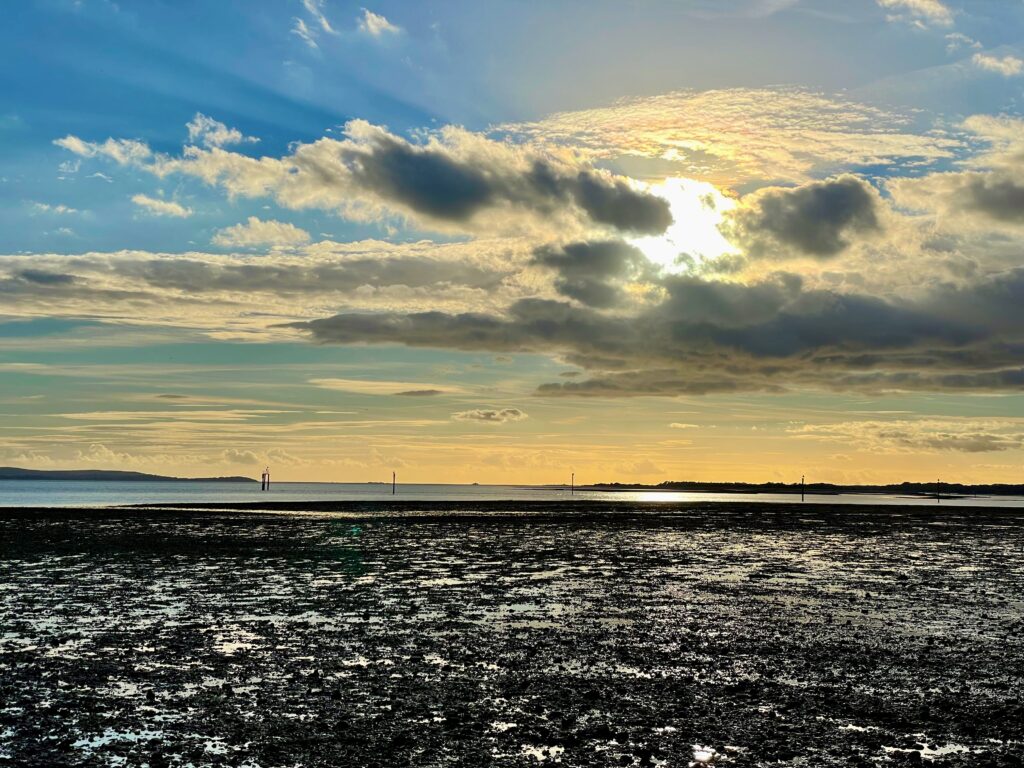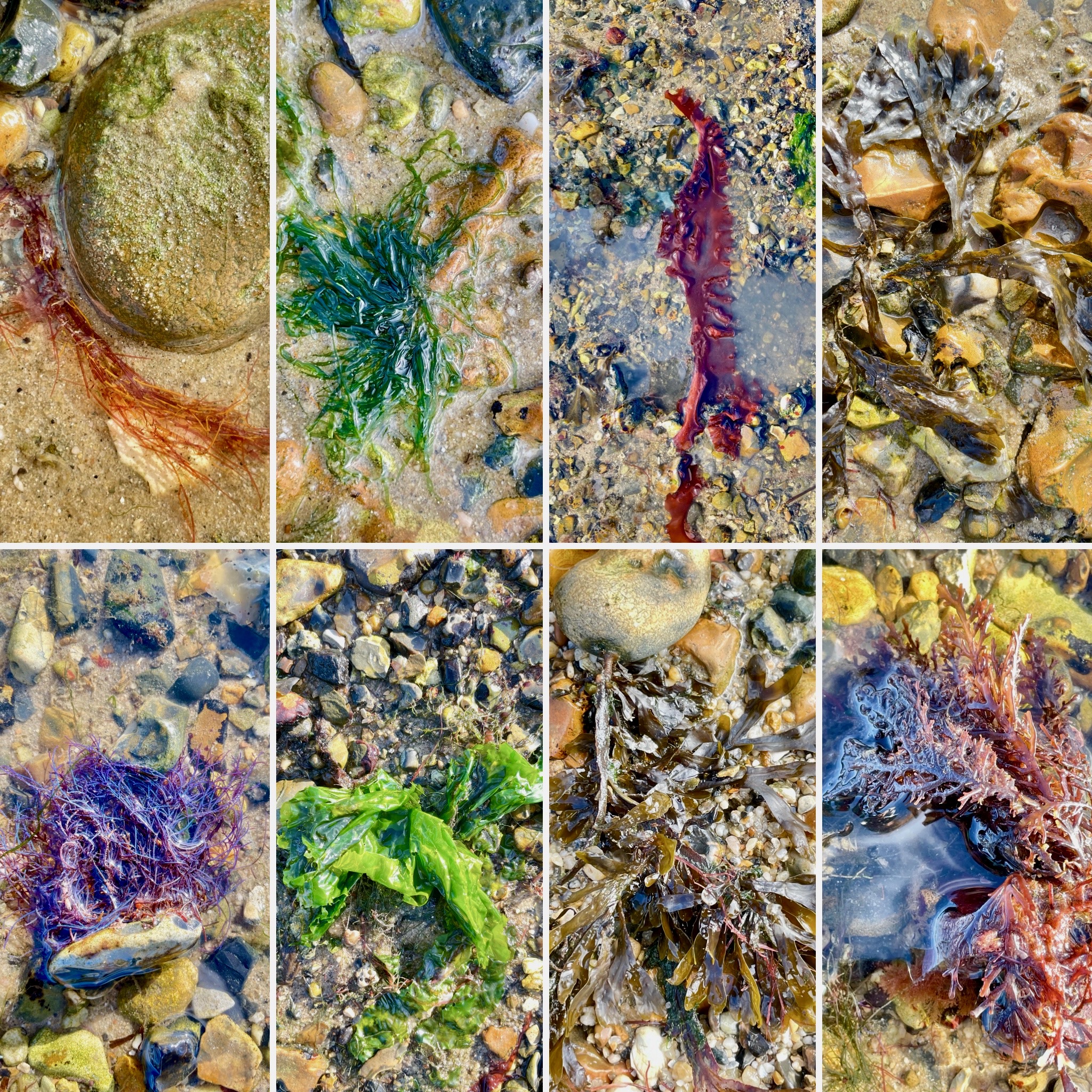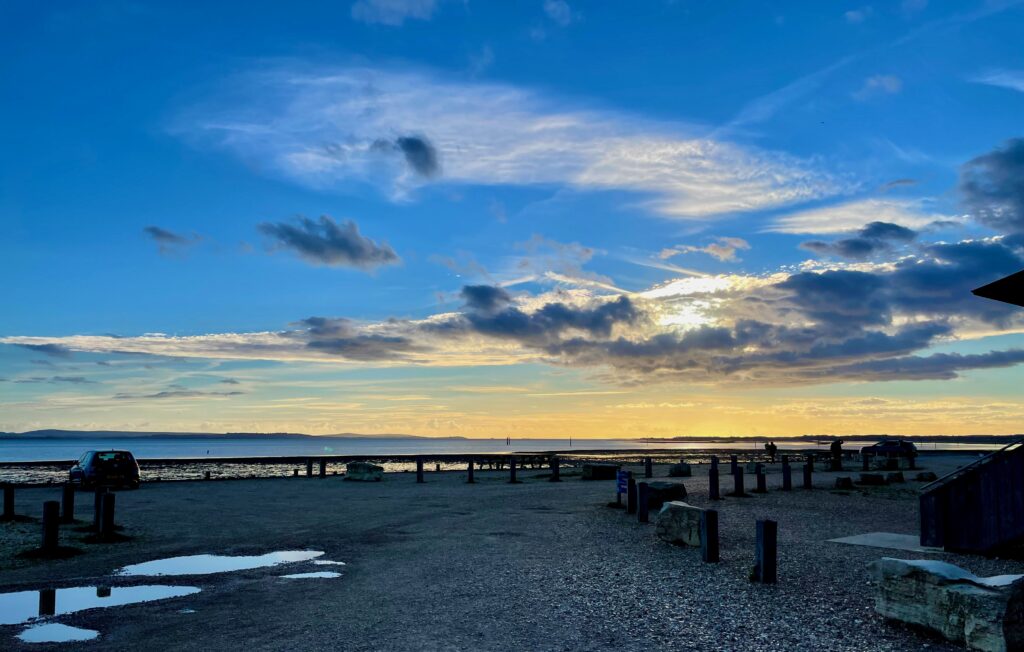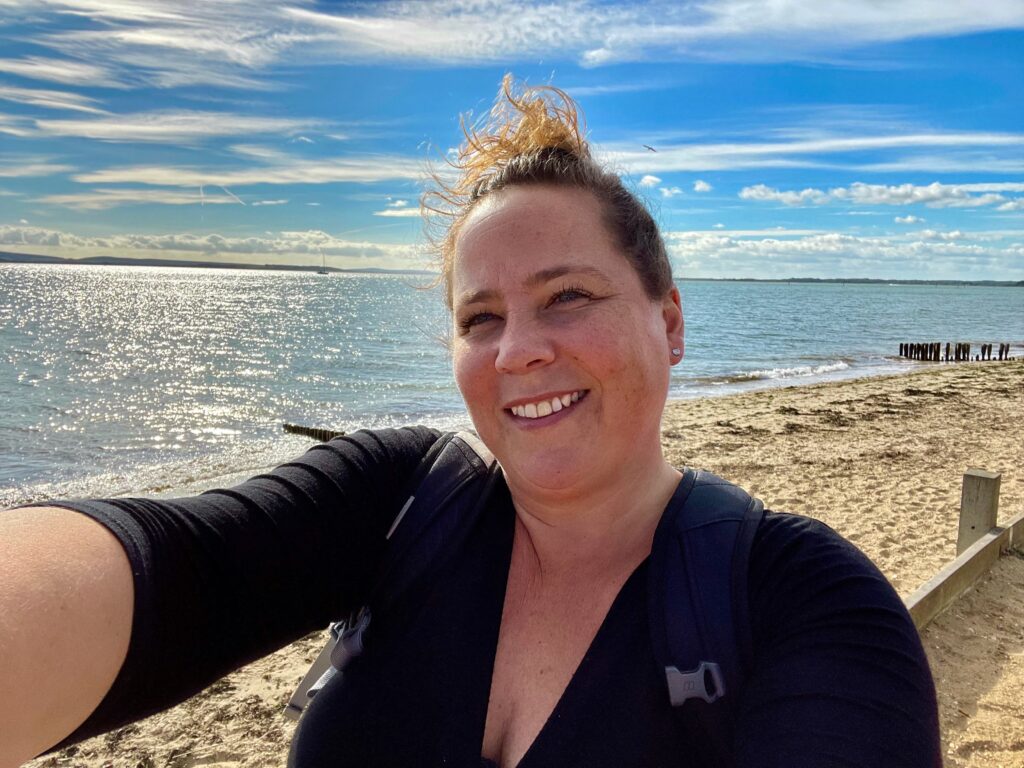For my birthday this year (yes, 21 again!) I chose to support local businesses and enjoy a selection of fun and fabulous experiences. Rather than celebrating in one big bang. They didn’t all involve connecting to nature but those that did included the flower festival at Winchester Cathedral and volunteering with the Wildlife Trust on their Intertidal Walkover Survey at Lepe beach.
Full-on nature-nerding for the win 🙂
What is an Intertidal Survey?
I didn’t really understand the science involved in a walkover survey; I simply thought I’d be doing ‘something like rock pooling’ for the afternoon.
‘Intertidal’ denotes the area of a seashore that is covered at high tide and uncovered at low tide. Because the wildlife found there survives when in the water (at high tide), and also out of the water (at low tide), it is one of the most interesting habitats found anywhere in the world.
The algae cover creates an uneven, slippery surface so wellies are a must. The surveys are done at particular times of the year when the sea goes out rapidly and a large area is exposed. The activity formed part of Secrets of the Solent, an exciting four-year marine project run by the Wildlife Trust and supported by the Heritage Lottery Fund. The project is celebrating the amazing wildlife and people that share the Solent’s coast and waters, through art, cuisine, citizen science, and more.
Let’s get this party started
I was pretty excited on arrival and walked down to where I could see a small group of folk gathering at the beachfront. I kid you not, the weather was glorious. In fact, it couldn’t have been better; we enjoyed a gorgeous blue sky, stunning cloud formations, splendid sunshine and low wind.

After a safety briefing, our leader Emily explained how the sea safari would work. We split into pairs, each duo comprised one more experienced surveyor and one novice. I was the novice and so was responsible for photographing and recording our sightings. Caroline was my teammate who’d done this before. Following the compulsory hand gel application, I excitedly grabbed the pen, paper and clipboard and set out to the shoreline. If I’m honest, I really hoped to see a sea anemone or a sea star*.
*Sea stars are what you and I might know as starfish but Megan McCubbin recently advised that scientists are moving away from the term starfish since the animals are not fish.
Connecting to Nature through Seaweeds and Sea Squirts
We’d be exploring 3 areas, each getting progressively further out from shore, and we’d have just 30 mins in each one. Emily explained although we’d probably be content to stay in the area closest to the shore, we’d need to keep moving to complete the survey in full. Plus, the good stuff is usually seen in the third zone, as this is the deeper area once the tide is in.
Becoming softly fascinated by seaweed
We started closest to shore and began identifying some seaweeds. Perhaps connecting to nature through seaweed doesn’t sound that appealing? But it was and there were so many different types! I learnt that the British and Irish seas are home to more than 600 species of seaweed; this is more than 6% of the known species globally. They are incredibly important ecologically and provide both food and shelter for numerous other creatures. Emily got very excited when we found the blue iridescent cartilage weed and produced a well-thumbed book to consult.
Seaweeds, or marine macroalgae, are plant-like organisms that live in coastal areas, usually attached to rocks. They are divided into three taxonomic groups: brown, red and green. Broadly speaking, species fall into the group that most closely matches their colour. Once I started looking, I couldn’t believe the variety and I could feel I was developing a growing appreciation for our Solent seaweeds.

So many other delights!
Emily kept track of time for us. And thank goodness she did because exactly as she’d predicted, Caroline and I could easily have spent the entire time in zone one. It was all so riveting and although we didn’t know each other, I could feel a strong bond building between us as we shared this almost ‘out of this world’ experience.
When prompted, we walked out to the next zone to discover and identify the next set of incredible lifeforms that spend much of their life hidden beneath the waves. We saw all sorts of cute shellfish; topshells, periwinkles, cockles, mussels, clams, whelks and an asymmetrical scallop, as well as sponges, crabs, barnacles, keel and sand mason worms, sea spiders and sea squirts, and so much more. Here are some of the best photos.

Developing a fondness for squelchy, squirty blobs
My favourite find was the orange-tipped sea squirt. Caroline showed me that it does what it says on the tin if you gently squeeze it! There were lots around, more so as we moved into zone three. It might sound strange to develop a fondness for squirty blobs, but that’s what you get when connecting to nature! We also watched a hermit crab catch its tea and some sea spiders exploring the underside of a rock in zone three. It turns out that I feel the same way about sea spiders as I do about land spiders… I prefer to admire from afar, haha.
What does ‘Connecting to Nature’ actually mean?
The University of Derby describes someone as nature connected when they feel a kinship with, and take action to protect our natural world. Each of us involved in this survey was developing and deepening our nature connectedness.
I experienced a rainbow of emotions. Excitement as I began “tuning my eye in” and amazement at the huge variety of species living beneath our waters. Also, intense joy as we found the species that indicate a healthy ecosystem. It was backbreaking work spending so long bending at the hips and I longed for a little stool to sit on. I’d have stayed there ages just exploring my immediate area. The whole thing was a sensory adventure; the sound of the wind and distant waves, the smell of the sea, the feeling of the cold water and the sight of the sunshine glinting on the surface of the water.

And at the end the sunset was phenomenal. One of the outcomes of nature connection is that you enter this reciprocal relationship with the natural world. I can’t help but feel mother nature was gifting us with the sunset of dreams to thank us for doing our bit.
Connecting to Self and Others is important too
During the 90 minute survey, I forgot about anything else and became completely focused on the ‘here and now’; I forgot that I needed the loo; that my back was hurting; that the traffic was likely to be bad on the way home. It was liberating to feel somewhat ‘unimportant’. Nature reminded me of its resilience; the natural world is always there doing its thing, regardless of what it encounters on the way. Well, that’s if humans don’t destroy it first, of course. And while connecting to nature is fab, I also thoroughly enjoyed reconnecting with my younger self. She used to be fascinated with ticking off species in her seashore ID book.
Caroline mentioned her hands were freezing, and she dropped her hat in the water. She carried on regardless, also so swept up in the experience that these things could all easily be accepted. The experience grounds you so hard to the present moment; and when you add nature connection to mindfulness, the result is so much greater than the sum of its parts.
As we finished I felt like I could jump for joy at having been part of something so worthwhile. And as I drove home, and thoughts of stress in my life returned, the feelings were less intense. Somehow doing this mindful connection work always helps to bring perspective on life’s ups and downs.
Volunteering for Wellbeing
I read recently that volunteering was the best activity for improving wellbeing in the long term. That makes complete sense to me. I guide others on outdoor mindfulness experiences (find out more here) and to be part of a team led by someone else for a change was wonderful. We were like-minded folk, working together with a common purpose for the greater good. I developed a real rapport with Caroline. I felt valued, respected and a sense of belonging, and also hugely thankful to Emily for making it happen.
We were approached by a couple who expressed an interest in joining at another time, much to Emily’s delight. I can’t help but feel that many people would enjoy this type of activity. Local residents could join in or community groups such as the local WI, walking and gardening clubs. I’ll definitely be signing up to do another one next year (I’d do one sooner if I could!). I’m already looking forward to taking my son back to show him what I learnt. We looked up some of the species in his seashore ID book, and he was eager to visit immediately. I didn’t see a sea anemone or sea star as I’d hoped, but as you’ve probably guessed, it didn’t matter.
Want to get involved with the Wildlife Trust?
I also volunteer with the Hampshire and Isle of Wight Wildlife Trust and help run their Wildlife Tots sessions in Winchester. The sessions are designed to get families with young children outdoors, connecting to nature and exploring the natural world. If you’d like to find out more about volunteering with them, they offer a huge variety of roles, and here is their volunteering opportunities page.
Connect to Nature with Adore Your Outdoors

Sonya is a qualified Forest Bathing (or Shinrin-Yoku) and Mindfulness Guide. She left her corporate life in early 2019 and now dedicates her time to helping small groups of humans rewild themselves with nature therapy.
Through guided meditations and calm invitations, she pilots them to play, experiment, photograph and explore their surroundings with a child-like fascination
She loves trees and moss with a passion and she’s proud of it. Despite not even owning a pair of wellies as a kid, she has overcome SAD (seasonal affective disorder) and even fallen in love with winter as an adult.
When she knew she was about to become a mother, she knew the best thing she could give her child was a love for all seasons – even winter.
Now she lives her dream. Spending more time outdoors, connecting with her too-often-side-lined creative side, and helping others live a happy and healthy life through nature therapy for wellbeing.


